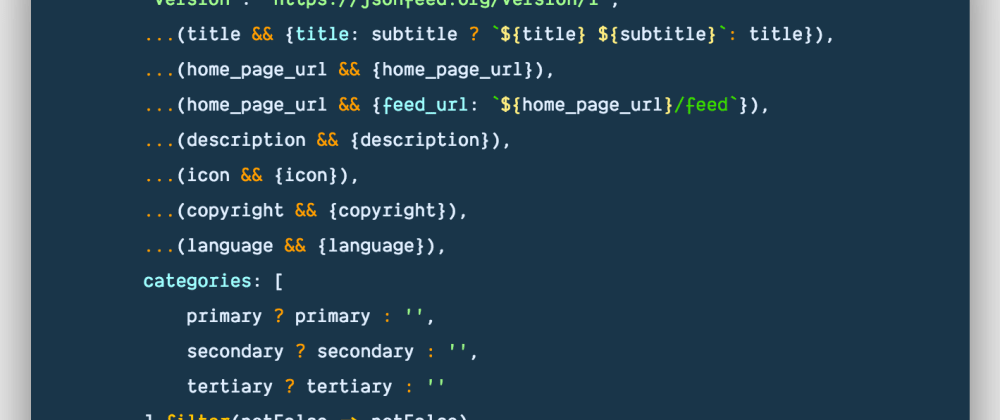I've been tinkering with RSS-feeds for podcasts in CLIs, Express and Serverless functions lately, which involves both parsing and constructing complex objects with lots of fields and information. Since you're dealing with user-generated data from different sources, you aren't guaranteed that all fields are populated all the times. Some fields are optional as well.
Earlier I would deal with this by conditionally applying new keys on an object like this:
function episodeParser(data) {
const { id,
title,
description,
optionalField,
anotherOptionalField
} = data
const parsedEpisode = { guid: id, title, summary: description }
if (optionalField) {
parsedEpisode.optionalField = optionalField
} else if (anotherOptionalField) {
parsedEpisode.anotherOptionalField = anotherOptionalField
}
// and so on
return parsedEpisode
}
This isn't exactly smooth (but it works). I could also do nifty things with looping the object keys and so on, but that entails code that's a bit more convoluted and you don't get a good sense of what the data object is either.
Yet again, new syntax in ES6 comes to the rescue, and I found a pattern where I was able to rewrite the code over to something like this:
function episodeParser({
id,
title,
description = 'No summary',
optionalField,
anotherOptionalField
}) {
return {
guid: id,
title,
summary: description,
...(optionalField && {optionalField},
...(anotherOptionalField && {anotherOptionalField})
}
}
If we put the function into action, it would look something like this:
const data = {
id: 1,
title: 'An episode',
description: 'An episode summary',
anotherOptionalField: 'some data'
}
episodeParser(data)
//> { guid: 1, title: 'An episode', summary: 'An episode summary', anotherOptionalField: 'some data' }
This function has a couple of features. The first is parameter object destructuring, which is a good pattern if you want to deal with lots of arguments in a function. The second is the three dots spread syntax (...), which here is used to “spread” the object if the condition is true-ish, which we check if the AND operator (&&). What you end up with is a neat concise function which is also easy to test.
You can see it action in our podcast feeds implementation for express.js and netlify lambdas.



















